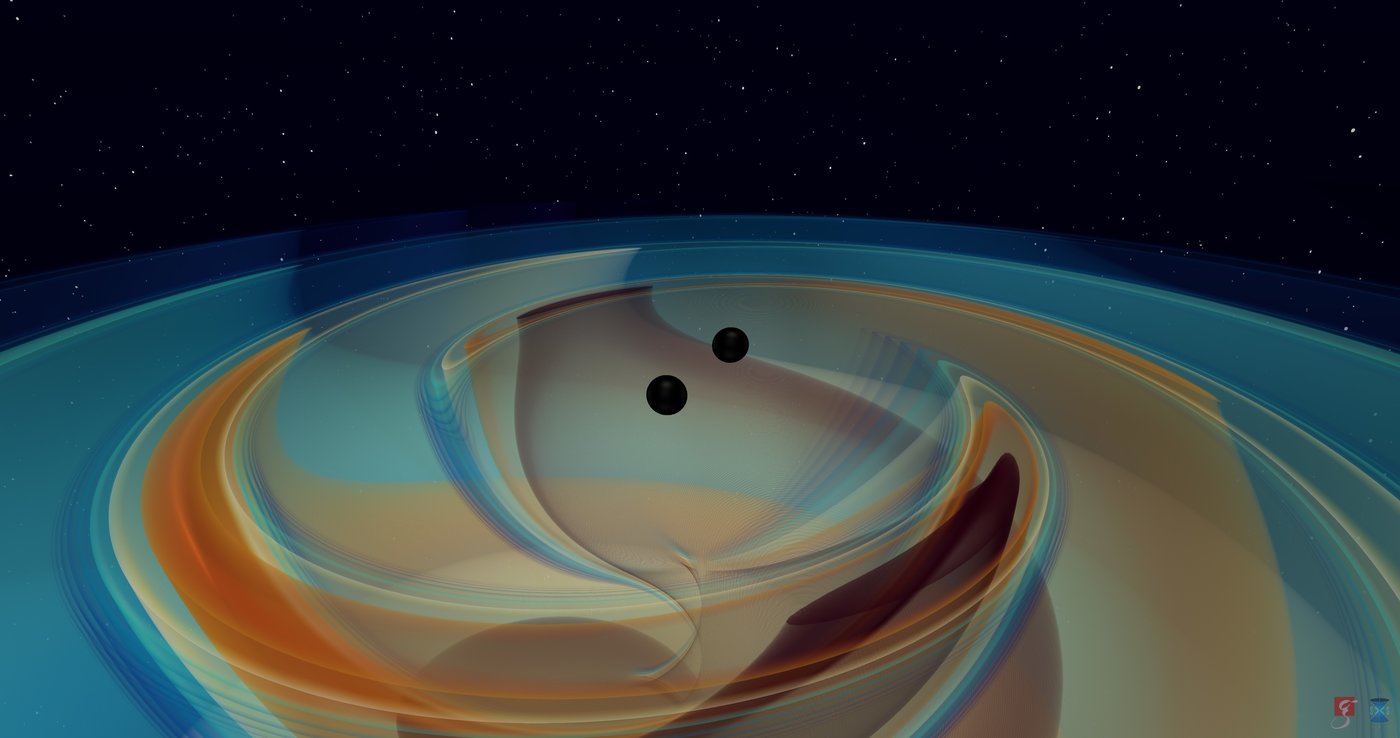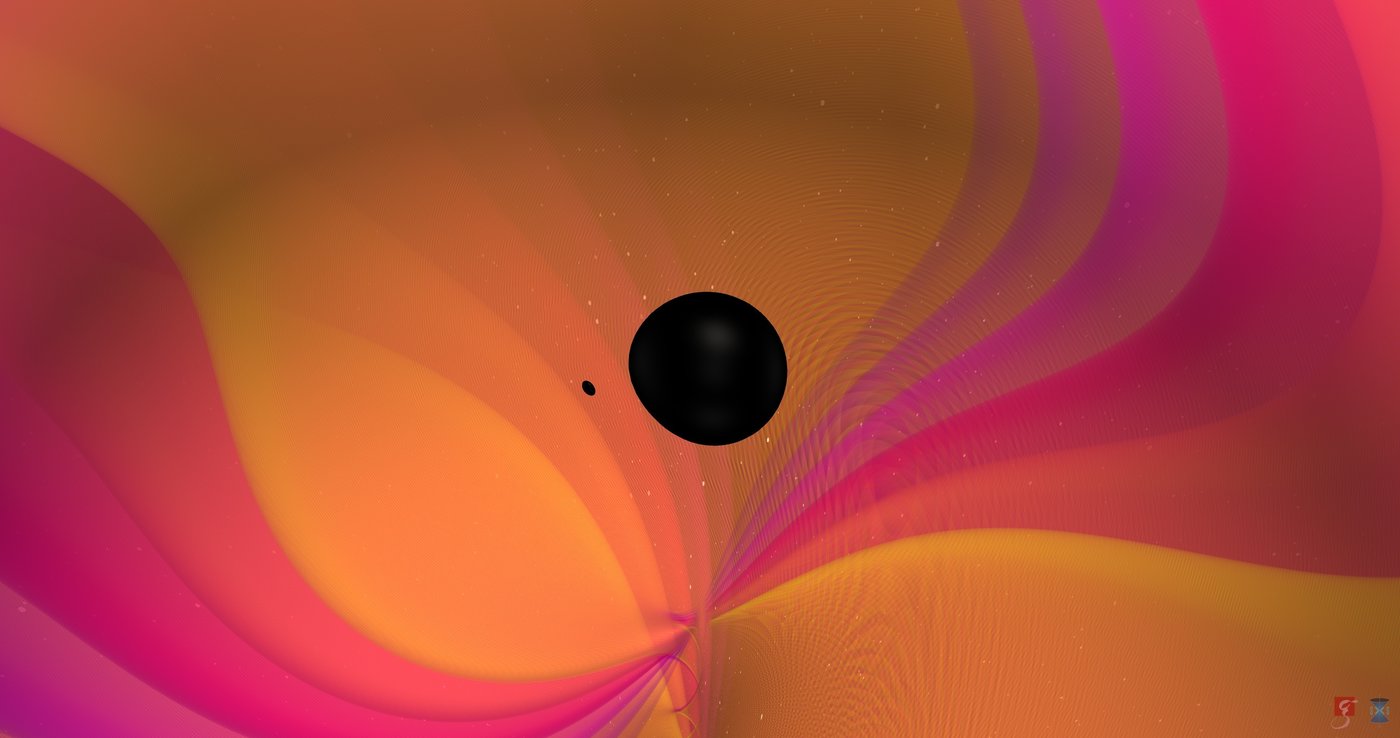Synopsis:
In early 2016, one hundred years after Einstein predicted the existence of gravitational waves on the basis of his theory of General Relativity, LIGO announced the first observation of gravitational waves passing through the Earth emitted by the collision of two black holes one billion four-hundred million light years away. Since then, tens of binary black holes and two neutron stars have been observed by LIGO and Virgo detectors.
In this course we will review what gravitational waves are, how they are produced, what are the main astrophysical and cosmological sources and how we model them, using analytical and numerical relativity. We will also review the quest for gravitational waves, which culminated with the recent discovery by LIGO, and discuss how those new astronomical messengers are detected and how they can unveil the properties of the most extreme astrophysical objects in the universe.
Classes schedule:
Classroom: Online
Lecture days: Mondays: 1:15pm – 2:45pm (CEST) [90 min]
Training days: Wednesday: 4:30pm – 6:00pm (CEST) [90 min]
First day of class: November 9th
Last day of class: February 22nd
(Note that the days/times of classes are not yet final)
Instructor contact info:
Name: Alessandra Buonanno
Office room: office # 1.24 @ AEI
E-mail: alessandra.buonanno@aei.mpg.de
Phone: +49 331 567 7220
Office hours: by appointment
Teaching Assistant contact info:
Names: Lorenzo Speri and Stefano Savastano
Office room: office # 0.64, 0.63 @ AEI
E-mail: lorenzo.speri@hu-berlin.de, stefano.savastano@aei.mpg.de
Phone: +49 331 567-7185, +49 331 567-7183
Office hours: by appointment
Textbooks:
Required textbook: “Gravitational Waves Volume 1: Theory and Experiments”, by Michele Maggiore.
Other useful textbooks:
“Gravitational Waves Volume 2: Astrophysics and Cosmology”, by Michele Maggiore.
“Gravitational Wave Physics and Astronomy” by Jolien Creighton & Warren Anderson.
“Gravity” by Eric Poisson & Cliff Will.
“Introduction to General Relativity, Black Holes & Cosmology” by Yvonne Choquet-Bruhat.
Prerequisites:
To follow the classes, students should be already familiar with the material covered in an introductory General Relativity course. It is not necessary to have followed a course in astrophysics and/or cosmology.
Exam:
There will be a digital oral examination. Master students at Humboldt University are required to collect at least half of the whole points available In the Homeworks in order to access to the final exam.
Homeworks policy:
- Late homeworks are accepted only under serious circumstances (to be discussed before due day).
- You are encouraged to discuss homeworks with other students, however the work you turn in should be your own formulation and reflection.
- Use of previous solutions is not allowed (violation of this rule is cause for failure of the course).
- Homework sets must show reasoning leading to the final answers in a clear and readable fashion to obtain credit.
- Please, include your name and, if you submit handwritten homeworks, write very clearly.
- Please, hand in homeworks, digitally typeset or as a clear scan, via moodle on the due day before class starts.
Grading:
For students at Humboldt University, the course grade will be based on the final exam. However, they are required to collect at least half of the whole points available In the assignments in order to access it. For IMPRS students from the Max Planck Institute for Gravitational Physics, the course grade will also be based on the homeworks.
Notes:
The lectures will be given entirely remotely.
Students and researchers in the Potsdam area are invited to audit the classes. No academic credit can be obtained, no official enrollment is necessary. However, if you are interested in auditing this class, you must enroll to the course.
Syllabus:
Note: what is below is a tentative course plan. It will be adjusted during the course.
The sections in the table below (in green) refer to the books by M. Maggiore
| Date (week) | Monday (lectures) | Tuesday (tutorials) | Reading material |
| Nov 9 & 10 (week 1) |
Overview presentation on GW physics and astrophysics
Linearization of Einstein equations, Lorenz gauge, TT gauge [1.1, 1.2] |
Discussion of arxiv:1608.01940. (TA: Lorenzo Speri) |
Einstein (1916) Einstein (1918) Eddington (1922) Einstein-Rosen (1937) 100 years of GWs First GW detection by LIGO Basic physics of GW150914 Flanagan & Hughes (2005) |
| Nov 16 & 18 (week 2) |
Interaction of GWs with freely falling test particles, key ideas underlying GW detectors [1.3]
|
Discussion of the 1st Homework sheet (TA: Stefano Savastano) |
1957 Chapel Hill Conference: Pirani & Feynman Ni-Zimmermann (1972) Estabrook-Wahlquist (1975) Rakhmanov (2004) Kennefick (1997) Isaacson (1968) |
| Nov 23 & 25 (week 3) |
Effective EMT of GWs, GW energy and linear-momentum fluxes [1.4]
Propagation of GWs in curved spacetime, geometric optics approximation, interaction with matter, absorption and scattering [1.5] |
Gravitational lensing of GWs (TA: Stefano Savastano) |
Misner-Thorne-Wheeler book (see Ch. 22) Hartle book (see Ch. 11) Wambsganss (1998) |
| Nov 30 & Dec 2
(week 4) |
Leading-order generation of GWs in the slow-motion approximation, quadrupole formula [3.1–3.3]
Characteristics of GWs and power radiated from binary systems [4.1] |
Discussion of the 2nd Homework sheet |
|
| Dec 7 & 9 (week 5) |
GWs from binary systems on inspiraling, circular orbits [4.1]
GWs from rotating bodies, e.g., pulsars [4.2] |
Scalar-Vector-Tensor Propagation of GWs in FLRW universe (TA: Stefano Savastano)
|
Peters & Mathews (1963) |
| Dec 14 & 16 (week 6) |
Effective field theory and post-Newtonian approximation [guest lecturer: Jan Steinhoff] |
Discussion of the 3rd Homework sheet (TA: Lorenzo Speri) |
Huang, Quantum Field Theory (Ch. 16, 14) Jackson, Classical Electrodynamics (Ch. 6.6) Levi, arxiv:1807.01699 |
| Jan 4 & 6 (week 7) |
Effective field theory and post-Newtonian approximation [guest lecturer: Jan Steinhoff] |
** POSTPONED ** | Poisson & Will book (see Ch. 6,7, 11.1, 11.2) Buonanno & Sathyaprakash (2014)Goldberger & Ross, arXiv:0912.4254 |
| Jan 11 & 13 (week 8) |
Basics of post-Minlowskian theory [guest lecturer: Justin Vines] |
Discussion of the 4th Homework sheet (TA: Stefano Savastano) |
|
| Jan 18 & 20 (week 9) |
Basics of post-Minlowskian theory [guest lecturer: Justin Vines] |
PM theory and scattering amplitudes (TA: Lorenzo Speri) |
|
| Jan 25 & 27 (week 10) |
BH perturbation theory & quasi-normal modes [12.1, 12.3] |
Discussion of the 5th Homework sheet (TA: Stefano Savastano) |
Regge-Wheeler (1957) Vishveshwara (1970) Press (1971) Detweiler-Chandrasekhar (1975) Ferrari-Mashhoon (1984) Mashhoon (1985) Schutz-Will (1985) |
| Feb 1 & 3 (week 11) |
Effective-one-body theory | WKB in BHs perturbation theory (TA: Stefano Savastano) |
Buonanno-Damour (1999) Buonanno-Damour (2000) Buonanno & Sathyaprakash (2014) (see Sec. 6.2.3) Damour (2012) |
| Feb 8 & 10 (week 12) |
Effective-one-body waveforms | Discussion of the 6th Homework sheet (TA: Lorenzo Speri) |
|
| Feb 15 & 17 (week 13) |
Analytical/numerical relativity templates for searches of GWs from compact-object binaries [7.2, 9.2.3]
Data analysis tools for modeled searches of GWs from compact-object binaries [7.1, 7.3, 7.7] |
Data analysis techniques (TA: Lorenzo Speri) |
Finn & Chernoff (1993) Buonanno (2007) (see Sec. 6.4) |
| Feb 22 & 24 (week 14) |
Data analysis tools parameter estimation of GWs from compact-object binaries [7.4]
Inferring properties and tests of GR with first GW observations by LIGO/Virgo [15] |
Data analysis techniques (TA: Lorenzo Speri) |
GW150914-properties GW150914-tests-of-GR |
| March 3rd
**Postponed Tutorial class |
Discussion of the 7th Homework sheet |
Homeworks:
Homework sheets assigned: HW1, HW2, HW3, HW4, HW5, HW6, HW7.



 (Click on the images to learn more on the events)
(Click on the images to learn more on the events)